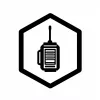The Communications Preparation Merit Badge - Apprentice Level is designed to introduce individuals to the essential aspects of emergency communications. This badge focuses on ensuring that you and your family can communicate effectively during a crisis, using both modern technology and basic methods that don't rely on complex infrastructure.
By earning this badge, you will learn how to:
- Understand the importance of communication in emergencies
- Create and implement a family communication plan
- Use various communication methods, including non-licensed radios
- Access emergency broadcast systems
- Employ basic signal methods
- Maintain emergency contact information
- Understand when and how to contact emergency services
- Address common communication challenges during disasters
This badge serves as a crucial step in ensuring your family's ability to communicate during emergencies and lays the groundwork for more advanced communication preparedness skills.


Comments and Recommendations